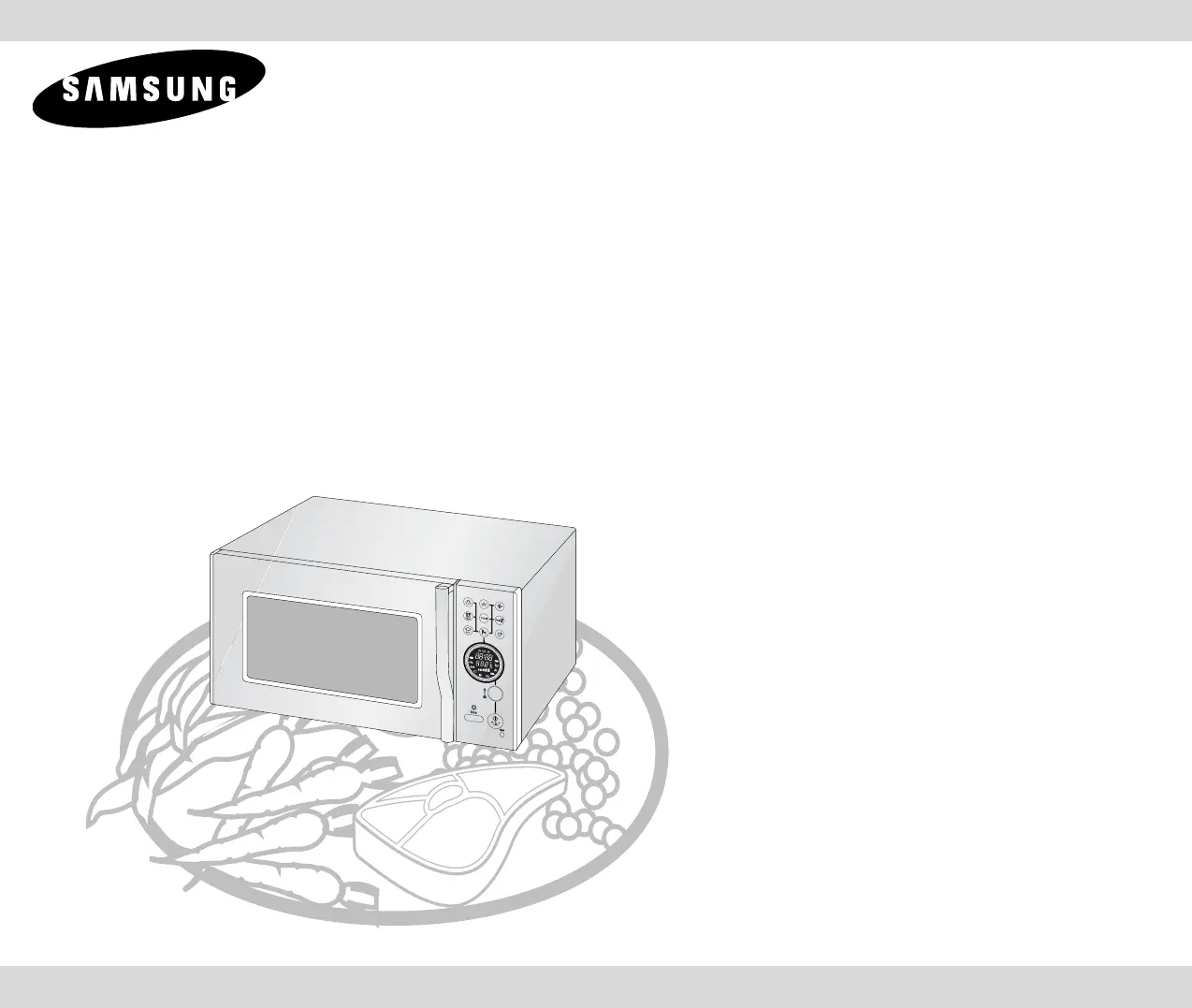Samsung CE1185UBC Bruksanvisning
Läs gratis den bruksanvisning för Samsung CE1185UBC (32 sidor) i kategorin Magnetron. Guiden har ansetts hjälpsam av 11 personer och har ett genomsnittsbetyg på 4.5 stjärnor baserat på 6 recensioner. Har du en fråga om Samsung CE1185UBC eller vill du ställa frågor till andra användare av produkten? Ställ en fråga
Sida 1/32

Code No.: DE68-03301B
MICROWAVE OVEN
Owner’s Instructions and Cooking Guide
CE1185GWC
CE1185GBC
CE1185UBC
“Quick” Look-up Guide ................................................................................2
Using the Steam Cleaning ..........................................................................3
Control Panel .............................................................................................4
Oven ...........................................................................................................4
Accessories ................................................................................................5
Using this Instruction Booklet .....................................................................5
Safety Precautions ......................................................................................6
Installing Your Microwave Oven .................................................................7
Setting the Time ..........................................................................................8
Checking that Your Oven is Operating Correctly ........................................8
How a Microwave Oven Works ...................................................................9
What to Do if You are in Doubt or You have a Problem .............................9
Cooking/Reheating ...................................................................................10
Power Levels and Time Variations ...........................................................10
Stopping the Cooking ...............................................................................11
Adjusting the Cooking Time ......................................................................11
Using the Auto Cook Feature ...................................................................12
Using the Power Defrost Feature .............................................................13
Using Crust Plate ......................................................................................14
Auto fast Preheating the Oven ..................................................................15
Cooking by Convection .............................................................................15
Grilling .......................................................................................................16
Choosing the Heating Element Position ...................................................16
Choosing the Accessories ........................................................................16
Cooking by Combination ...........................................................................17
Safety-locking Your Microwave Oven .......................................................17
Switching the Beeper Off ..........................................................................18
Manual Stop Turntable Function ...............................................................18
Cookware Guide .......................................................................................19
Cooking Guide ..........................................................................................20
Cleaning Your Microwave Oven ...............................................................27
Storing and Repairing Your Microwave Oven ...........................................28
Technical Specifications ...........................................................................28
jlXX_\n~jz~zTWZZWXiluUGGwGXGG~SGqG\SGYWW]GGXaY`Gwt
Produktspecifikationer
| Varumärke: | Samsung |
| Kategori: | Magnetron |
| Modell: | CE1185UBC |
Behöver du hjälp?
Om du behöver hjälp med Samsung CE1185UBC ställ en fråga nedan och andra användare kommer att svara dig
Magnetron Samsung Manualer

7 April 2025

5 April 2025

4 April 2025

3 April 2025

2 April 2025

14 Mars 2025

10 Mars 2025

23 Februari 2025

21 Februari 2025

21 Februari 2025
Magnetron Manualer
- Tristar
- Candy
- Scancool
- Kogan
- Schneider
- Barazza
- Termozeta
- Novy
- Haier
- Blanco
- Ariete
- Kelvinator
- Bosch
- Solwave
- Sharp
Nyaste Magnetron Manualer

9 April 2025

9 April 2025

7 April 2025

6 April 2025

6 April 2025

6 April 2025

5 April 2025

5 April 2025

4 April 2025

4 April 2025